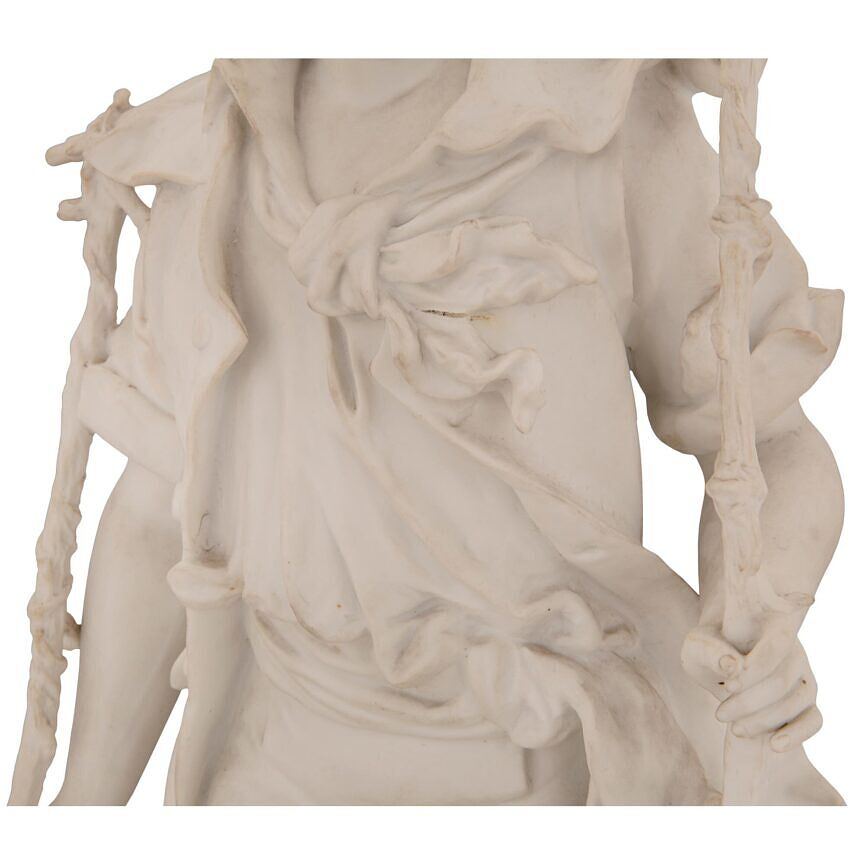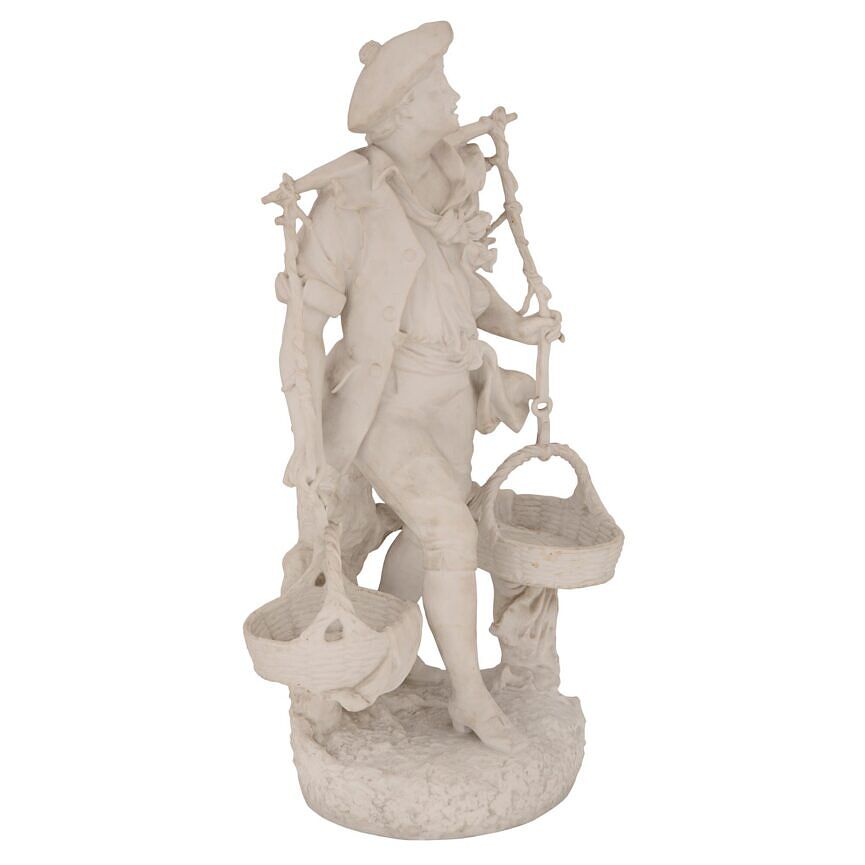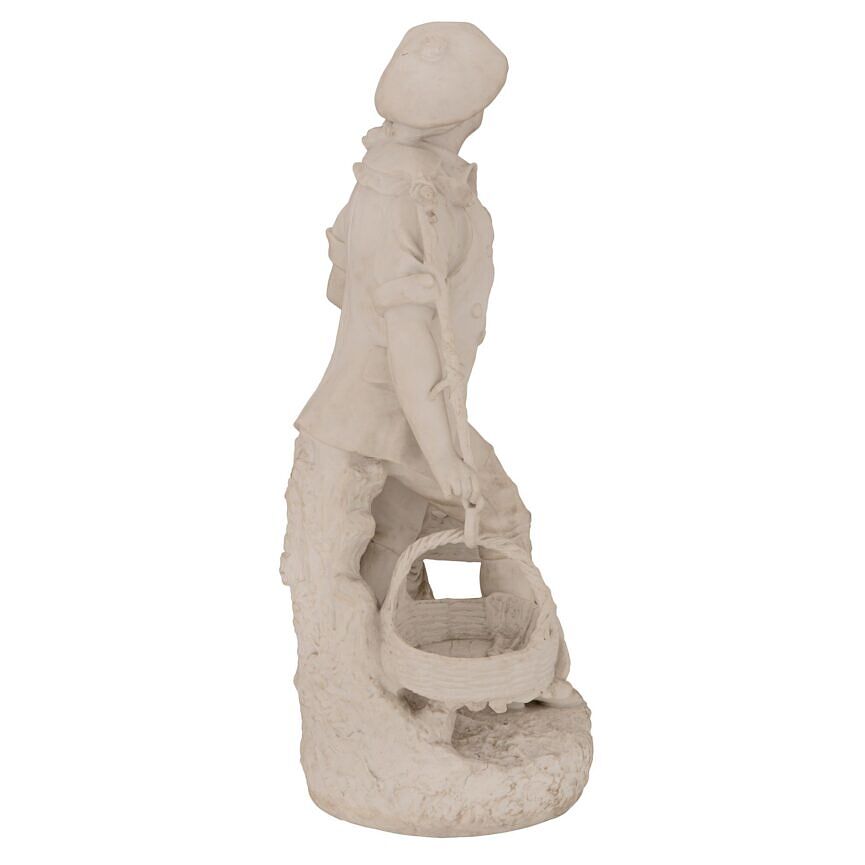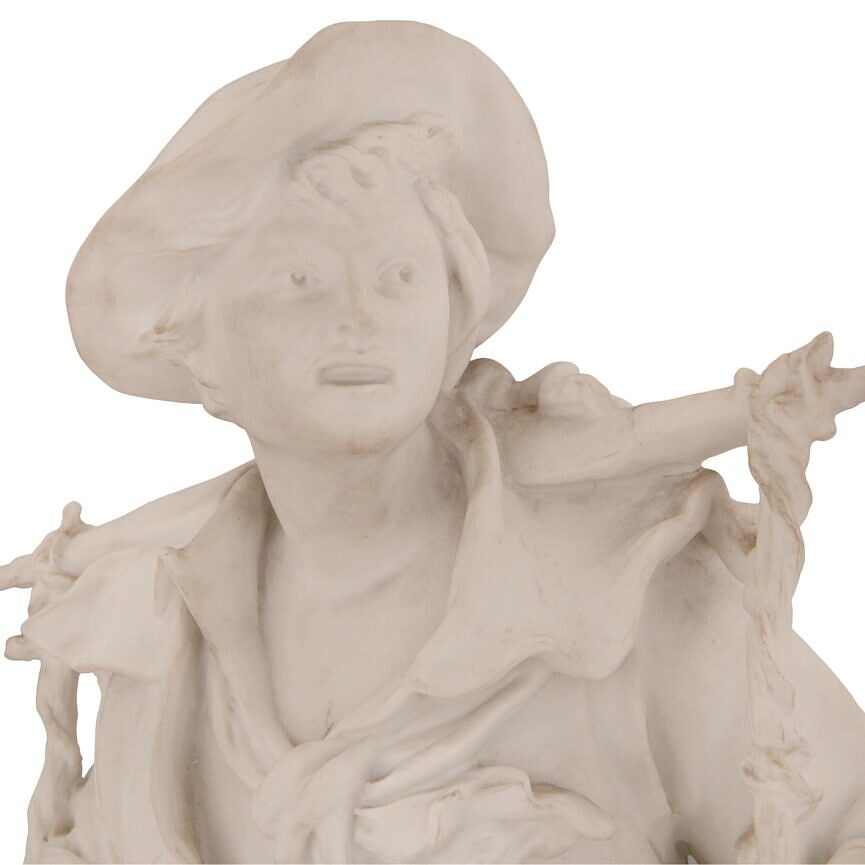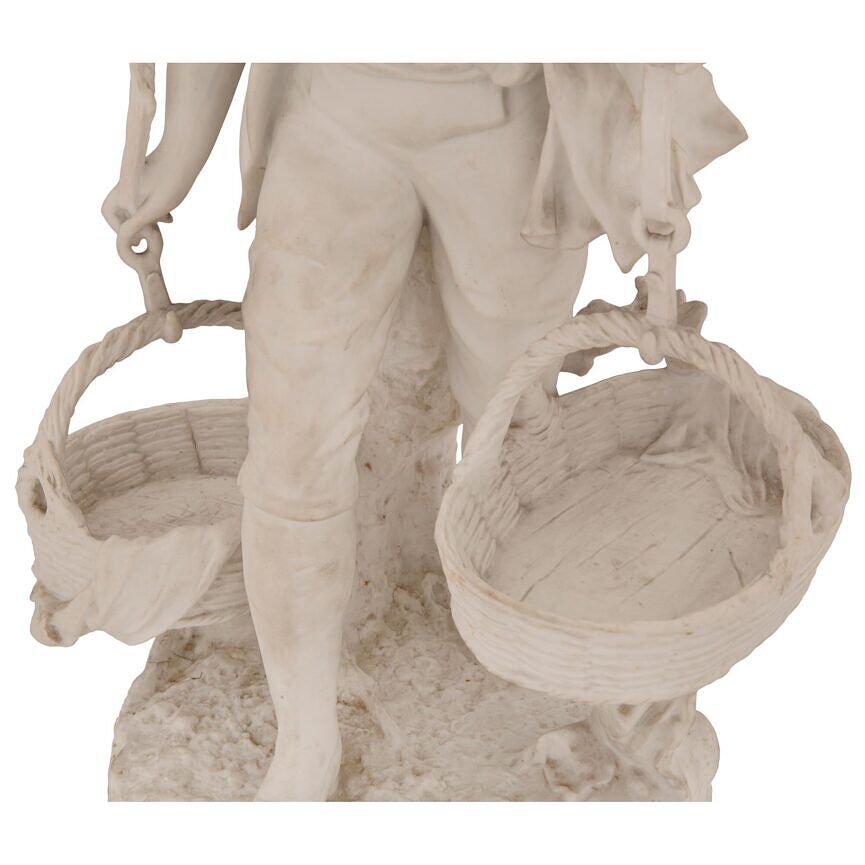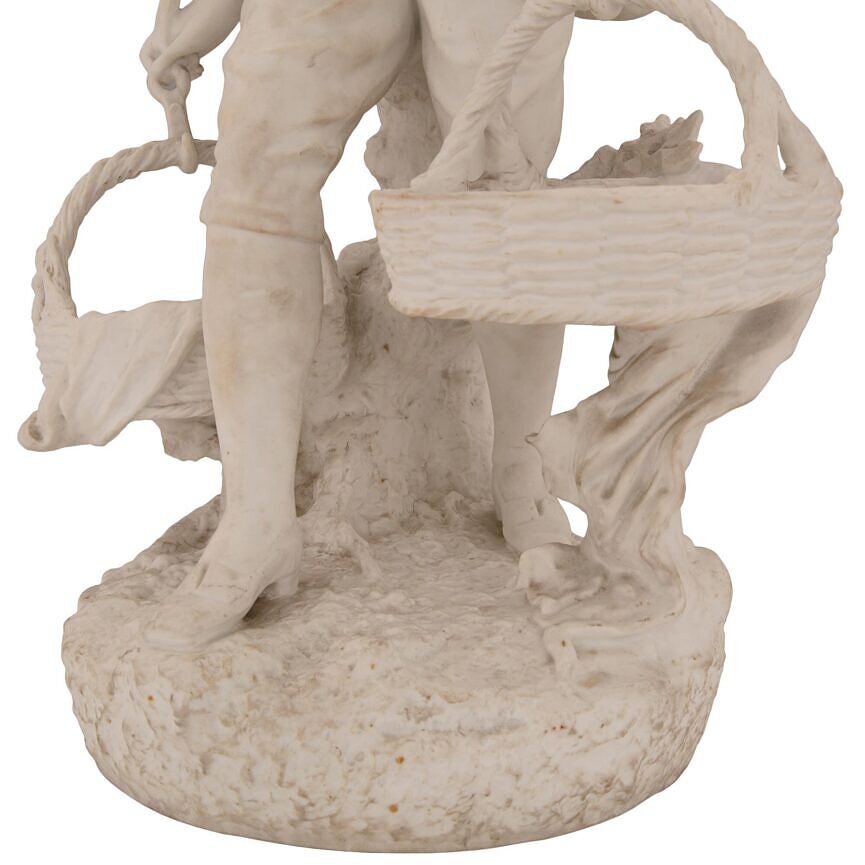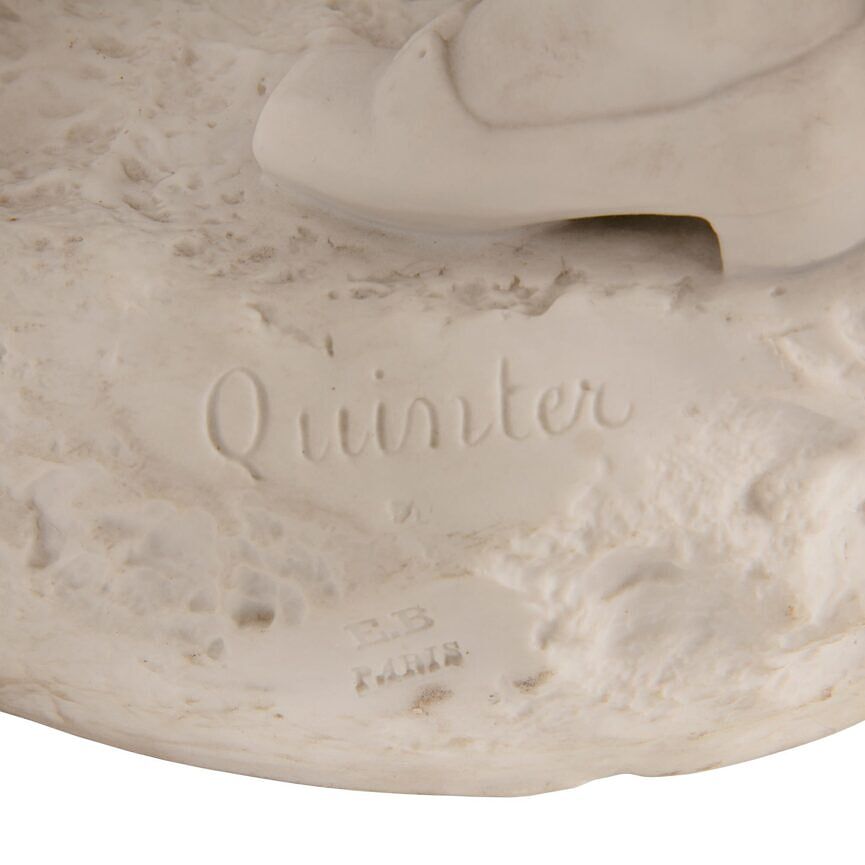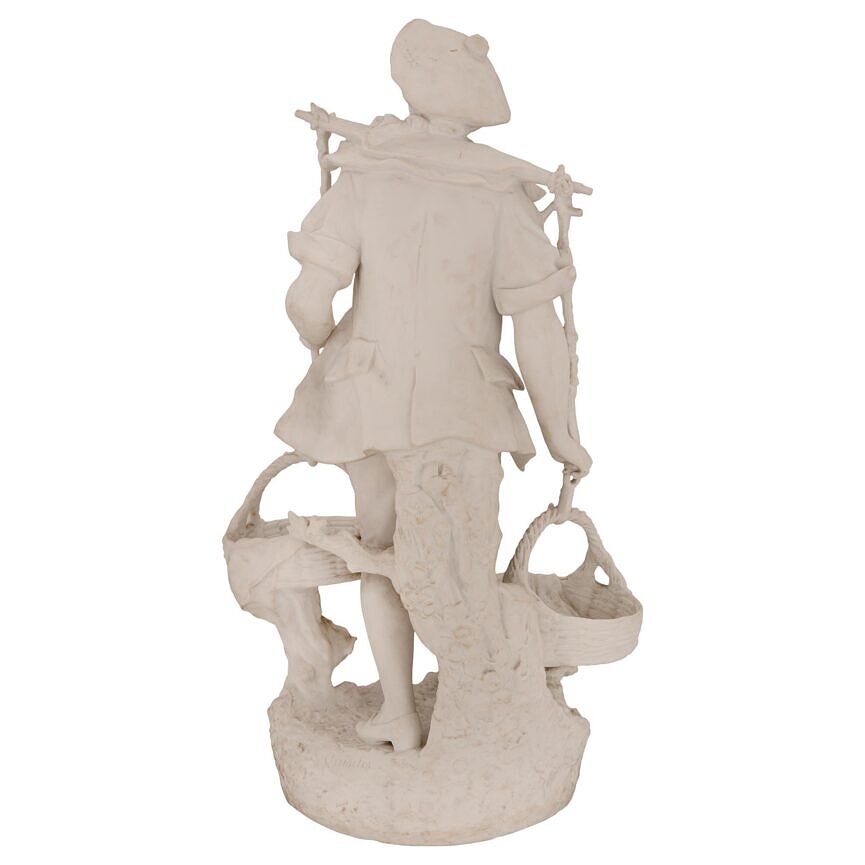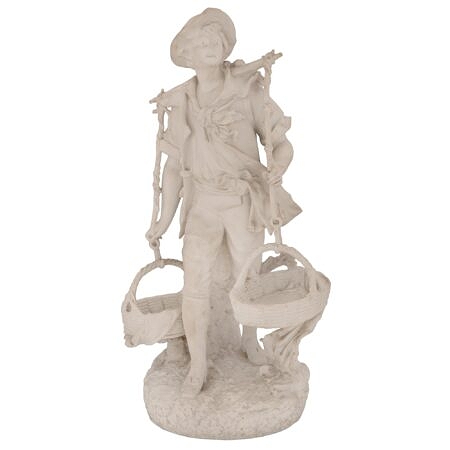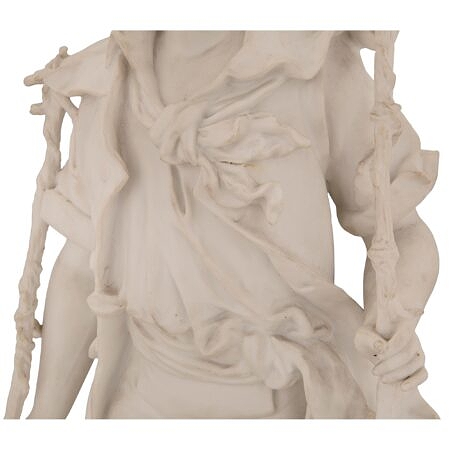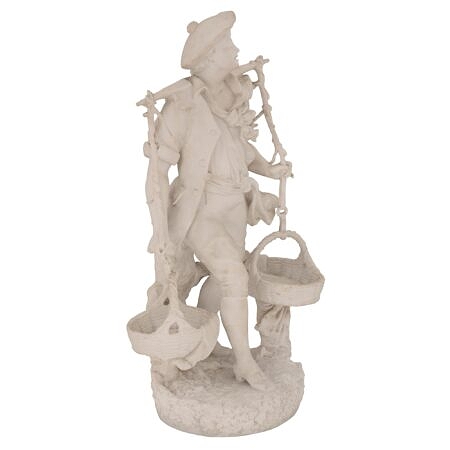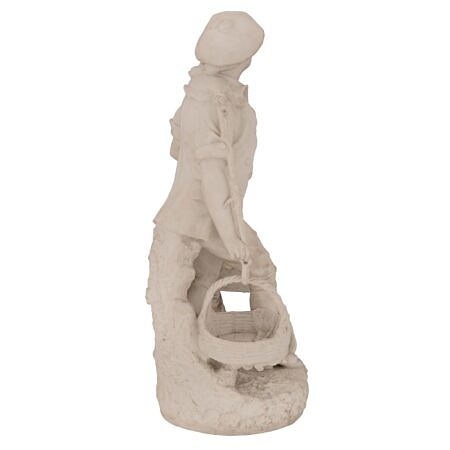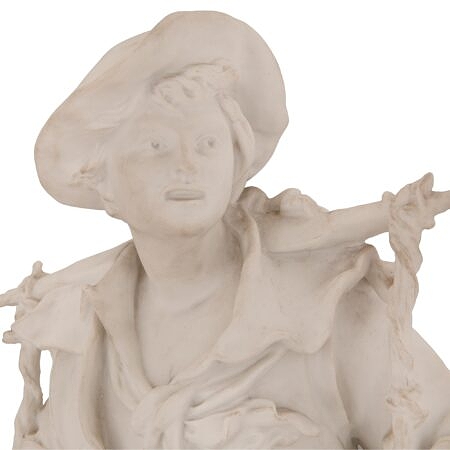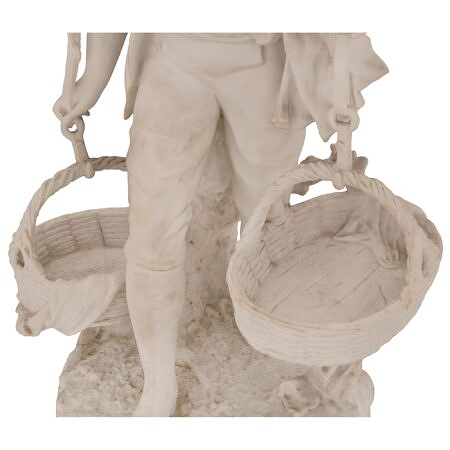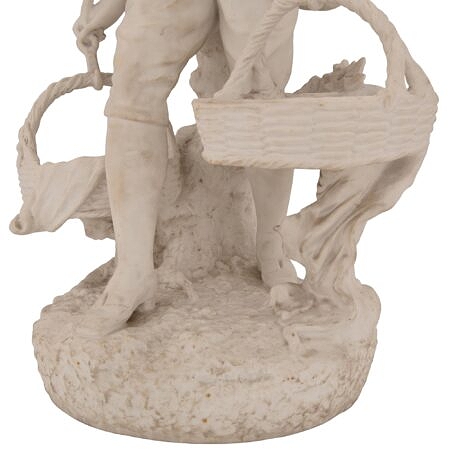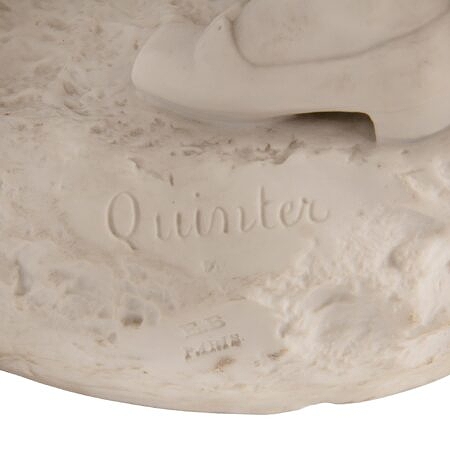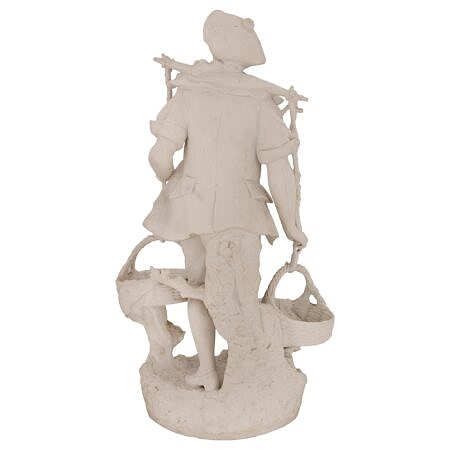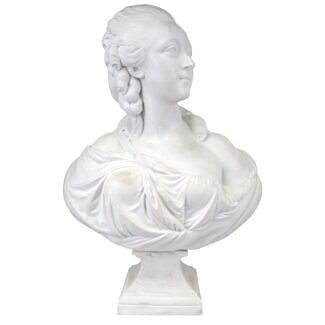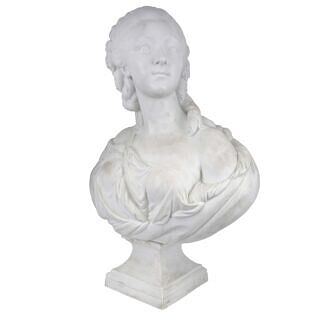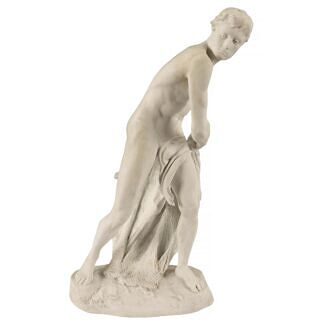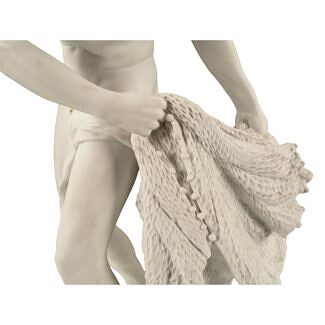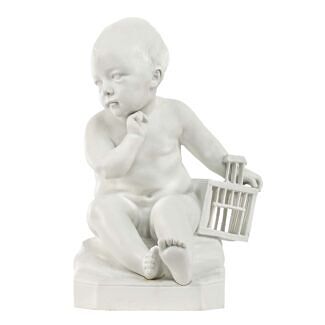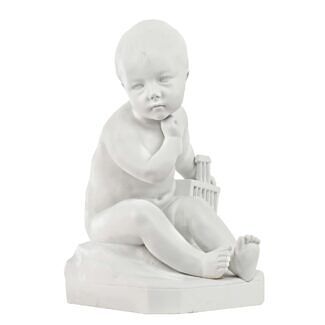A French 19th century Biscuit de Sèvres statue of the young Harvester signed Quinter E. B. Paris
List: $6,800.00
A handsome and high quality French 19th century Biscuit de Sèvres statue of the young Harvester signed Quinter E. B. Paris. The statue is raised by a fine ground like design where the signature is displayed. The charming young man... — Read More
A handsome and high quality French 19th century Biscuit de Sèvres statue of the young Harvester signed Quinter E. B. Paris. The statue is raised by a fine ground like design where the signature is displayed. The charming young man is dressed in period attire with his wonderfully executed clothes and jacket blowing in the wind. He is standing in front of a tree stump while carrying two woven baskets tied to a wooden bar over his shoulders. The baskets were typically used in transporting grapes from the vineyards. Wonderfully executed with exquisite details throughout. Original patina. — Read Less
- Item # 2314A
-
H: 25.5 in L: 14.5 in D: 11 in
H: 65 cm L: 37 cm D: 28 cm
- France
- 19th Century
- Porcelain
- Sèvres Read More
It was founded through the support of King Louis XV of France and at the initiative of Madame Pompadour to be located near her Château.
Due to Sèvres’ reputation for excellence and prestige, it has always attracted some of the best artists throughout history; François Boucher, Albert-Ernest Carrier-Belleuse, Étienne Maurice Falconet, Alexandre Fragonard and August Rodin, just to name a few. Many of these artworks can be seen at the Louvre Museum and the Musée National de Céramique in France.
Initially, Sèvres created a soft paste porcelain know as Biscuit de Sèvres. In 1768 the Bordeaux chemist Villaris and Jean Baptiste Darnet discovered deposits of Kaolin on French soil. In 1771 the Royal Academy sent a report on the creation of hard paste porcelain at which time Sèvres began manufacturing hard paste porcelain.
Louis-Simon Boizot (1743–1809) was a French sculptor renowned for creating Biscuit de Sèvres models, and was the director at Sèvres from 1774-1800, followed by Alexandre Brogniart(1800-1847) and Henri Victor Regnault in 1854.
Related products
-
# 8914 - H: 24" L: 17" D: 9"
-
# 10607 - H: 22" L: 12" D: 12"
-
# 6727 - H: 16" L: 11" D: 12"



